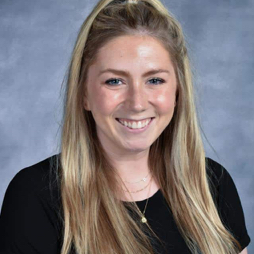At Erie High School, one class that often surprises students with how useful—and even enjoyable—it can be, is Personal Finance. The teacher behind that surprise is Mr.Kyle Fujimoto, who has developed a reputation for being both approachable and effective. With a calm, encouraging style and a strong focus on real-world relevance, Fujimoto has turned what could be a dry or confusing subject into something practical, clear, and even fun.
For many students, personal finance is their first exposure to terms like “interest rates,” “credit scores,” or “investments.” These aren’t the kinds of concepts most teenagers deal with daily, so it’s easy to feel intimidated. But Fujimoto has a way of breaking down these topics so that everyone can understand them.
As junior Cole Reseigh puts it, “Mr.Fujimoto breaks everything down step by step, so it doesn’t feel overwhelming. He explains things in a way that actually makes sense, even if you’ve never heard the terms before.”
That ability to translate complex financial concepts into everyday language is part of what makes Fujimoto’s teaching so effective. He doesn’t assume prior knowledge. Instead, he starts with the basics and builds from there, making sure students are never left behind.
Another important piece of Fujimoto’s success is his willingness to answer questions—anytime, on any topic. Students say he’s approachable and never makes anyone feel embarrassed for not knowing something. If someone’s confused, he takes the time to explain again, often with a different example or a relatable analogy.
He also encourages curiosity by sparking conversations—not just about school, but also about life. Whether it’s a quick hallway chat about a student’s sports game or a casual conversation about weekend plans, Fujimoto is the kind of teacher who makes himself available. This openness helps build trust, which makes students more comfortable asking for help in class.
“He always ties the lessons back to real-life situations, like budgeting for your first apartment or understanding credit cards,” says junior Camron Middleton. “It makes everything feel useful, not just like a school assignment.”
That real-world connection is a big part of Fujimoto’s strategy. In his class, learning how to write a check or compare interest rates isn’t just an academic exercise—it’s preparation for actual situations students will face within a few years. Many students leave the class with real confidence in their ability to make financial decisions.
Fujimoto often uses hands-on activities and interactive games to make the lessons stick. In one popular activity, students simulate applying for apartments with budgets based on pretend incomes. They quickly learn that rent, groceries, utilities, and transportation all add up—fast.
In another lesson, students play budgeting games that simulate real-life challenges, like an unexpected car repair or a surprise medical bill. These experiences make the abstract ideas of saving and planning feel urgent and real.
Students appreciate these kinds of lessons because they feel like more than just another worksheet. They’re engaging, and they often spark serious discussions—both in and outside the classroom. Many students say they go home and talk to their parents about what they learned that day.
For Tyler Muir, the class changed the way he thinks about money completely. “Definitely,” he says. “Before this class, I didn’t really think about saving or budgeting, but now I feel like I have a plan and know what to watch out for.”
That sense of preparedness is one of the biggest things Fujimoto hopes to give his students. While some high school subjects are about long-term goals or college prep, personal finance is about immediate life skills. Whether students go to college, join the workforce, or start their own businesses, they’ll all need to know how to manage money. Fujimoto’s class gives them a head start.
What makes Fujimoto stand out isn’t just that he teaches important material—it’s how he teaches it. He creates a classroom culture where students feel safe asking questions and encouraged to take ownership of their learning. His lessons are structured but never rigid, informative but never boring. He understands that high school students are balancing a lot—sports, jobs, social lives—and he respects their time and attention by making sure every lesson is worthwhile.
He also knows how to keep things fun. Whether it’s a friendly competition to see who can build the best mock budget or a trivia game about financial vocabulary, Fujimoto finds creative ways to keep students engaged. These activities aren’t just for entertainment—they deepen understanding by encouraging teamwork, discussion, and critical thinking.
Another strength of Fujimoto is his ability to connect with a wide range of students. In a single class period, he might work with someone who already knows how to balance a checkbook and someone else who’s just learned what a checking account is. He meets each student where they’re at, helping them build confidence step by step.
His classroom is a place where students feel respected and heard. That might not sound like a big deal, but in a subject where the stakes—like future debt, savings, and financial freedom—are so high, it makes a huge difference. Students who might otherwise be disengaged or anxious about money find themselves invested and ready to learn.
The impact of Fujimoto’s teaching goes far beyond the classroom. His students often say they feel more ready for adulthood. They know how to read a pay stub, track expenses, create a budget, and start building credit responsibly. Some even start applying these lessons right away, using apps to manage spending or setting up their first savings account.
But perhaps the biggest compliment to Fujimoto’s teaching is that students remember what they learn. Long after graduation, they carry his lessons with them—whether they’re signing a lease, applying for a loan, or simply making smart choices with their money.
In a world where many people enter adulthood without basic financial knowledge, teachers like Fujimoto are more important than ever. He’s not just preparing students for tests—he’s preparing them for life.






































